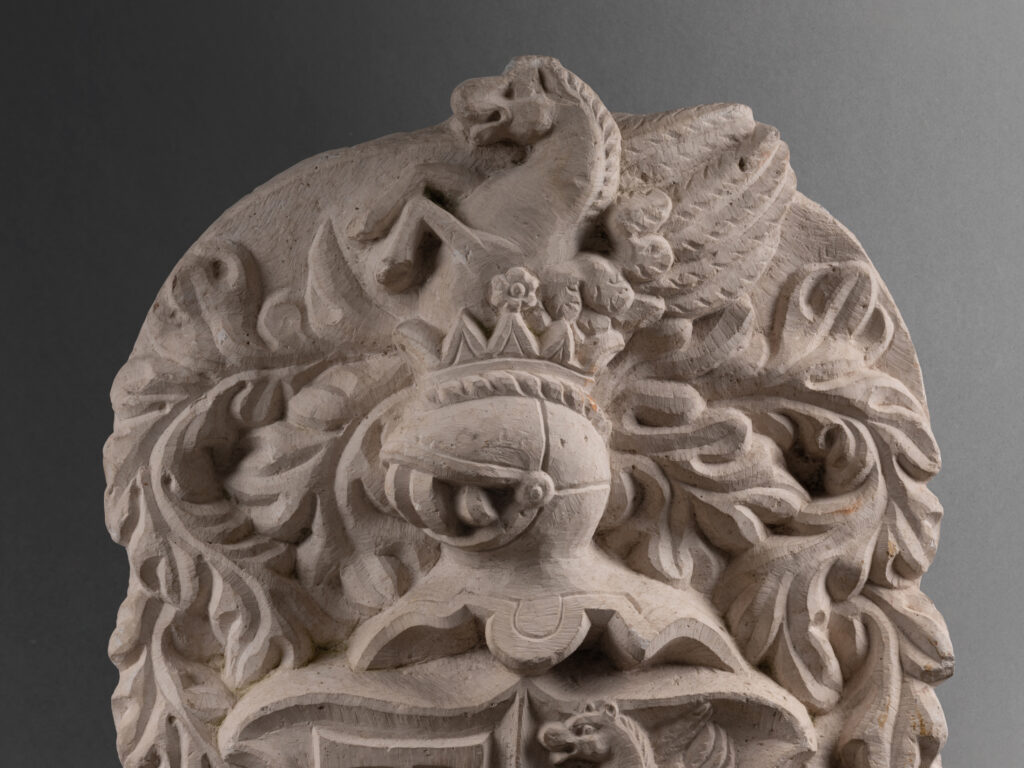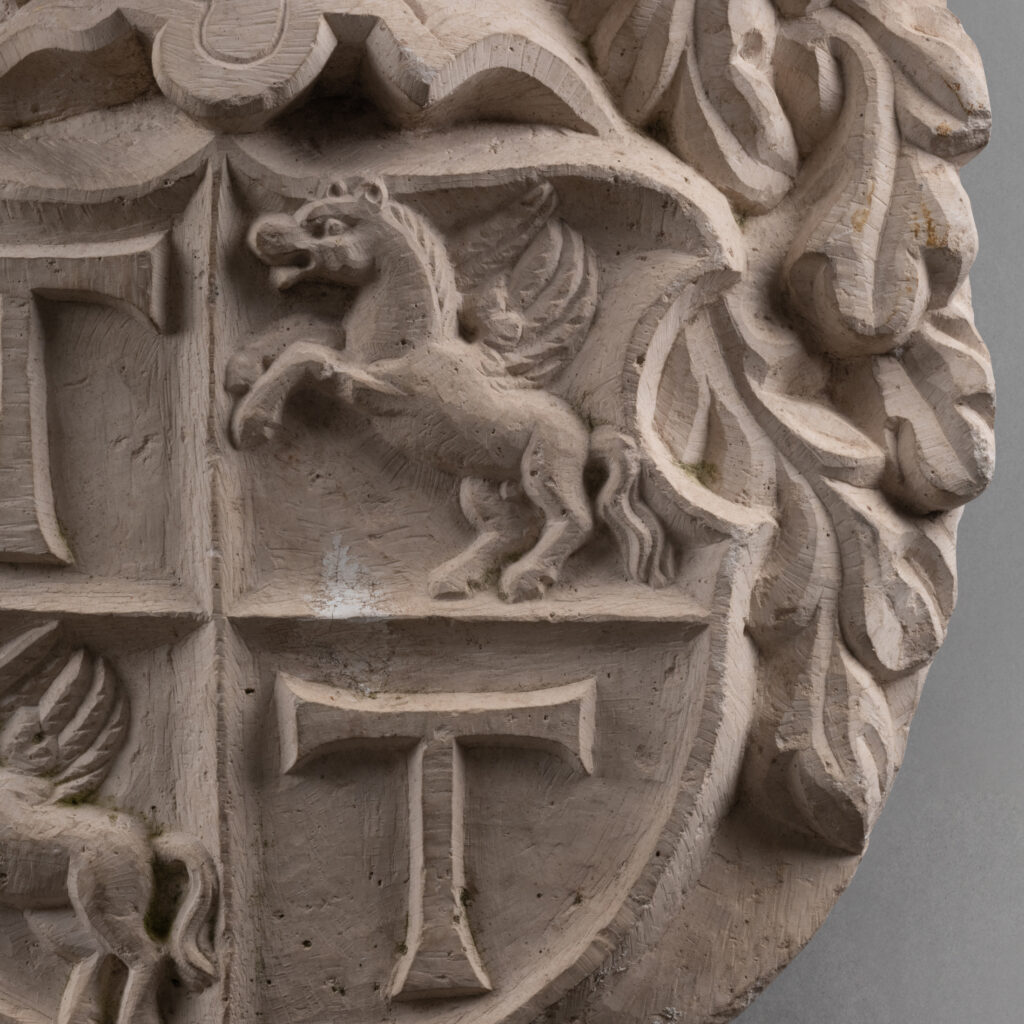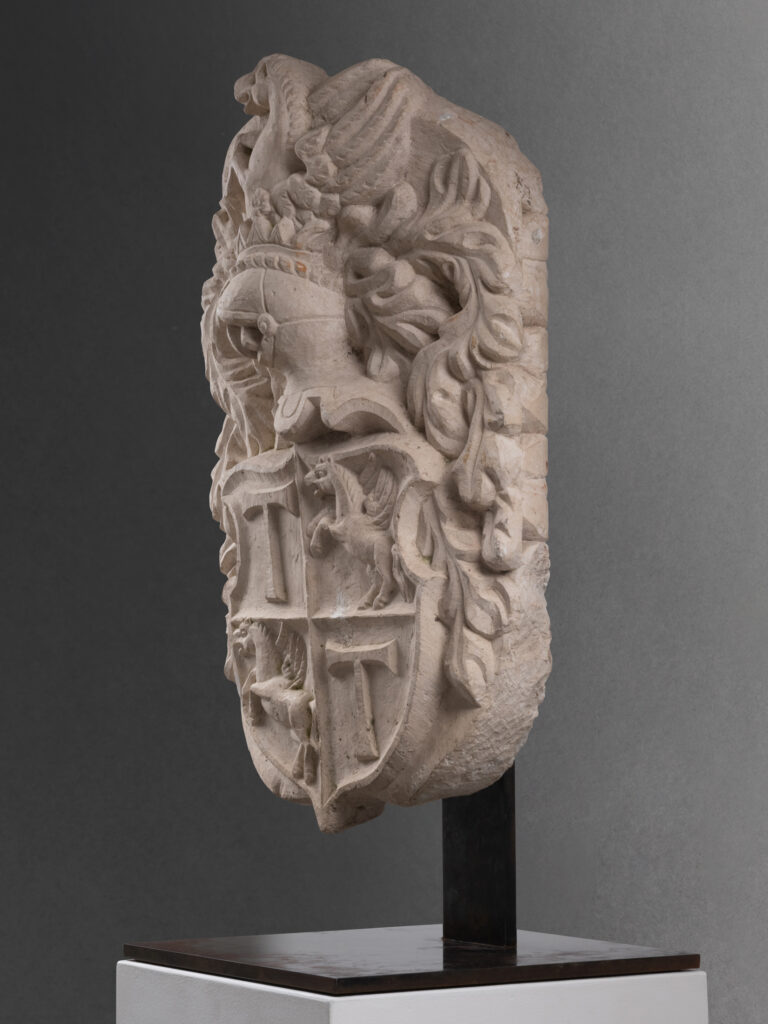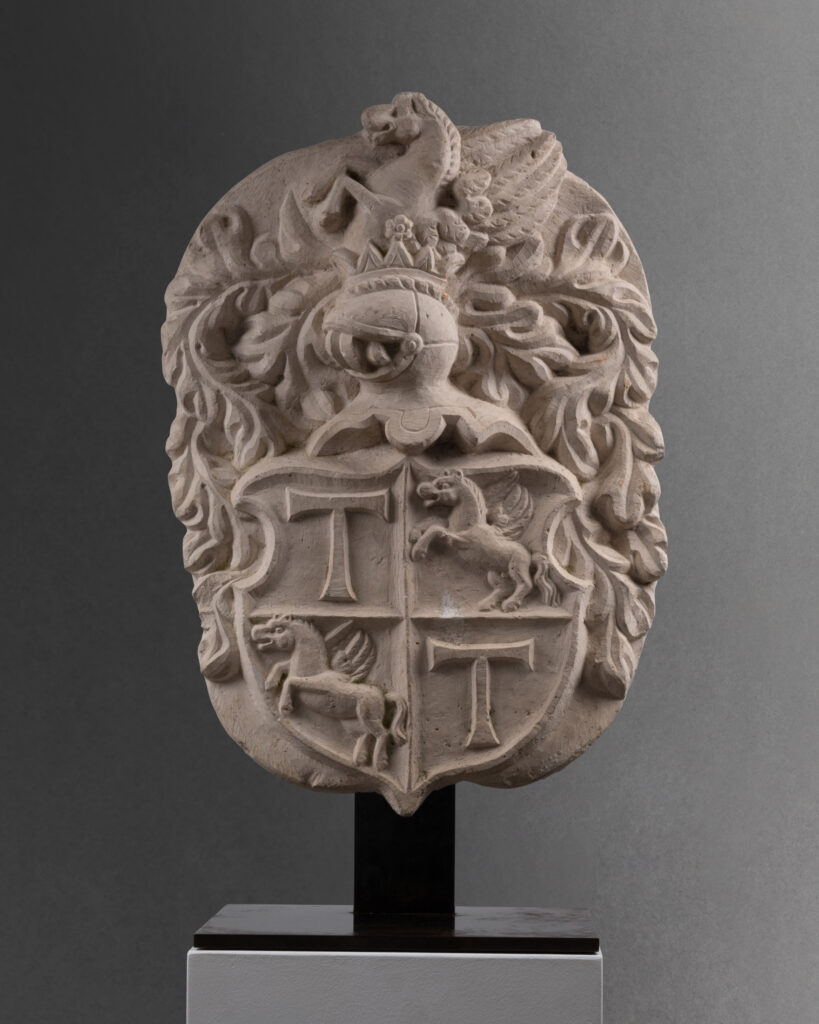This marble coat of arms shows a crowned helmet on a shield.
The whole is set on a leafy decoration topped by a winged horse. In heraldry, the coat of arms identifies its bearer. It was originally a recognition sign designed to identify each unit of an army on a battlefield to prevent different regiments from killing each other. Its role has become more widespread over time as a means of asserting identity or power. Furthermore, it is not uncommon to see coats of arms used for propaganda purposes for an institution, a family or a personality.
The helmet and crown of the figure in our coat of arms suggest that it is a knight, probably a viscount. The symbols on the shield are clues to the identification of the figure. Firstly, two Greek letters tau are carved: in the Christian religion, this letter is a sign of the religious or knights of Antony (order of Saint Anthony the Great). This tau cross symbolises a crutch to remind us of the crutches of the cripples that the Antonines treated. The other attribute is that of the winged horse and can be identified as Pegasus. It is a sign of fame and wisdom.
Our coat of arms appears to be carved from a piece of replaced marble, as the frieze on its left flank suggests. The various elements that adorn it lead us to believe that it probably belonged to a viscount or a viscount’s son who became abbot of a commandery of the Order of Saint Anthony.



